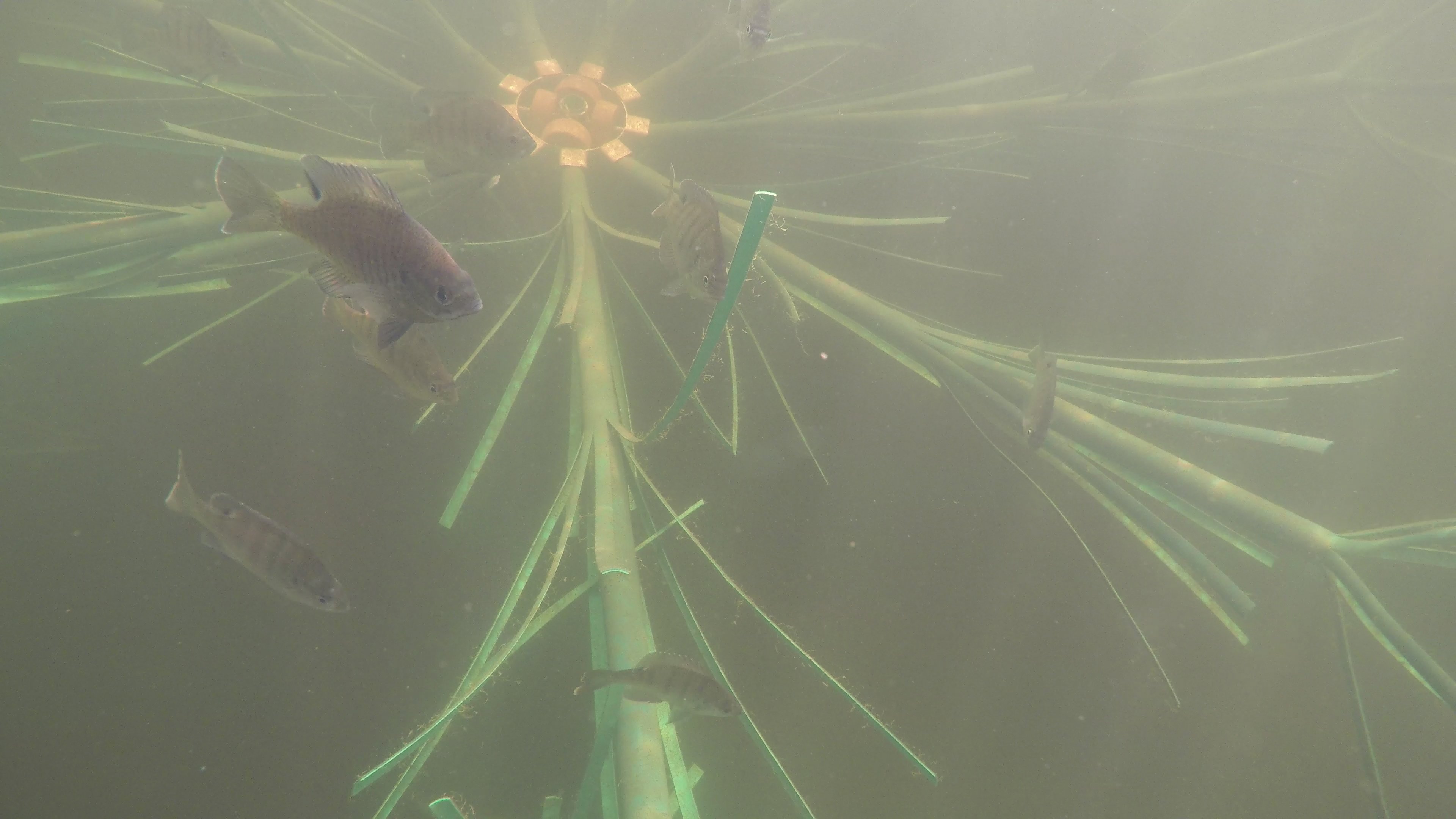The key to any pond's sustainability is a sustainable forage base, especially if you are on a quest to grow trophy-class Bass or Cats. When it comes to producing monster bass and catfish, the best option is to establish a sustainable forage base of Bluegill. Read on to learn more about why they are such an excellent choice and how to keep them thriving.
Why Bluegill Are an Excellent Choice as Forage Fish
When most people think about stocking a private pond, there are usually three different species that every single person names off; Largemouth Bass, Catfish, and Bluegill. This commonsense approach not only takes into account what the pond owner likes to catch but also the idea that they'll need some sort of baitfish readily available to grow trophy-class Bass or Catfish.

Coppernose Bluegill
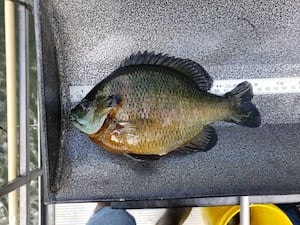
Native Bluegill
The key to any pond's sustainability is a sustainable forage base (a broodstock if you will), and most often, the best option for this is Bluegill. Bluegill is the most commonly utilized forage species because of their high fecundity (reproduction), fast growth rates, and heartiness. Both Native and Coppernose Bluegill travel well; they can be transported many hours in tightly packed hauling tanks, without the worry of high mortality rates before they can be introduced to their new home. These fish also perform well on a pelleted feed, increasing their growth rates, overall condition, and carrying capacity. Check out our post about identifying the different types of sunfish.
Factors Affecting Your Bluegill Broodstock
Now that we've explored why a Bluegill broodstock is vital to your fishery, let's discuss how to ensure their survival and sustainability in your pond. The three main factors are;
- cover,
- plenty of resources, and
- the correct density of predator species.
Like All Fish, Bluegill Need Cover
Once your newly hatched Bluegill begin to leave the nest, the first thing they search for is shallow water cover (brush piles, weed lines, rip rap, etc.). Now you're probably thinking this: if these fish are meant to be eaten by my predators, why is it important that they have a source of cover to hide in? The answer is because at this size they do not provide the maximum amount of nutrition possible to be transferred onto your predator fish. You need the young fry to survive long enough to grow to 3"-5" length. Then, they will be large enough to reproduce and be of a size where the majority of your predators can consume them easily, thereby maximizing the resources offered by your Bluegill. This is why it is so important to have complex habitat with tightly woven spaces near spawning areas to provide a sanctuary for your young forage fish.
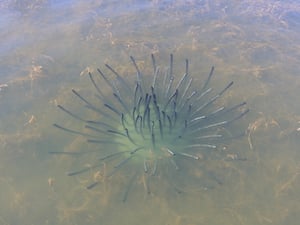
Honey Hole Shrub in Shallow Water
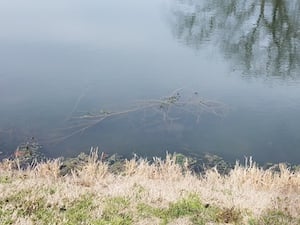
Natural Brush Pile in Shallow Water
Additional Resources Benefit Your Bluegill & Your Bass
Adding additional resources is a great way to increase both the growth and reproductive rates and potential Bluegill carrying capacity that your pond is able to support. These additional resources can come from two different avenues; aquatic fertilizer or a floating pelleted feed. Aquatic fertilizer increases the amount of Phytoplankton and Zooplankton which are food sources for micro and macroinvertebrates that Bluegill readily consume. A floating pelleted feed is another way to increase the available resources for your Bluegill. By adding supplemental feeding, you'll provide the needed nutrition to increase the potential carrying capacity that is available in your pond, essentially allowing you to increase the total density of your Bluegill population.
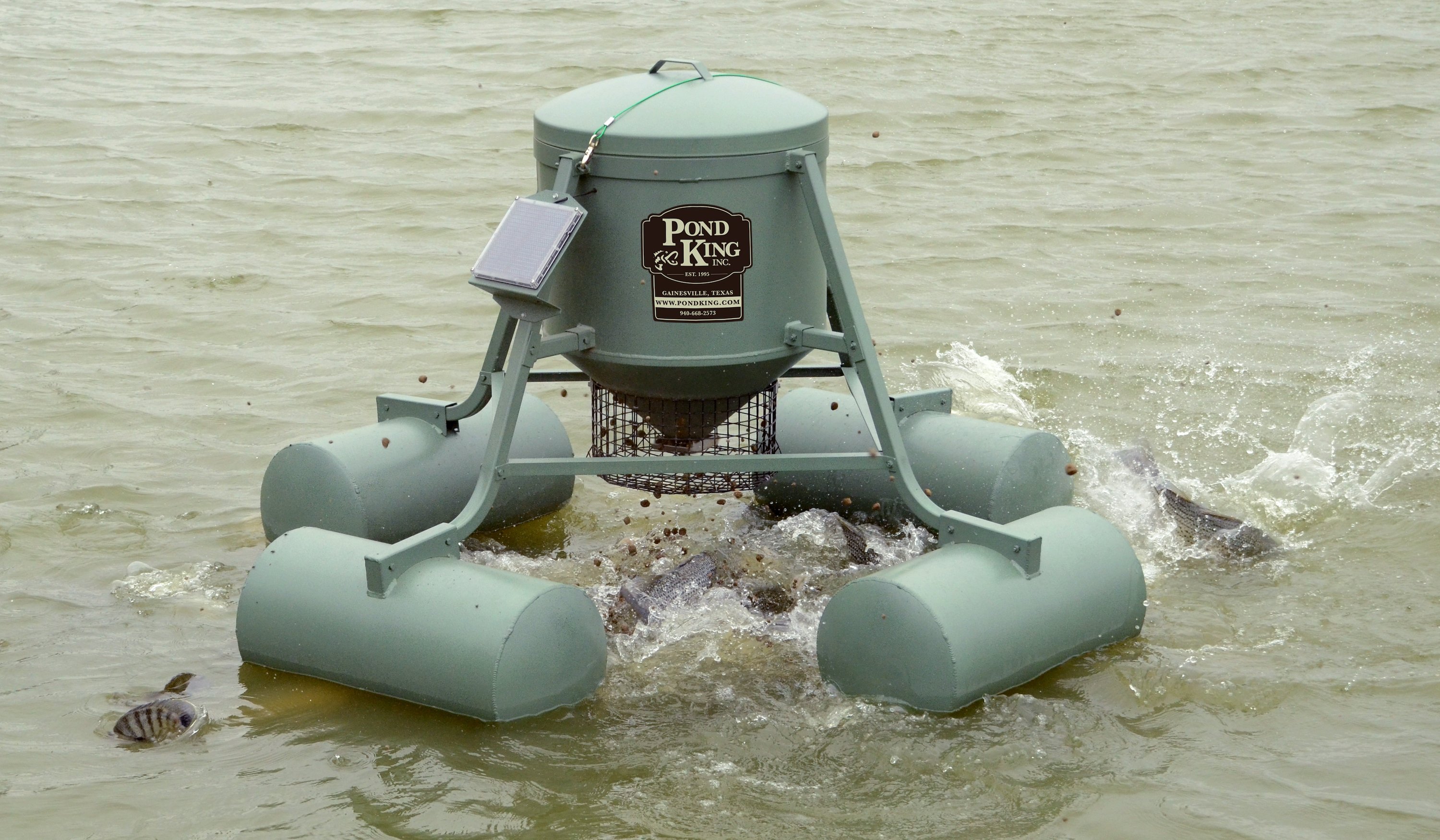
Having a floating type of feed is crucial because it will enable the Bluegill to consume the resource before it sinks to the bottom and is consumed by other species or buried in the substrate. When fed regularly, as with an automated feeder, this pelleted ration will increase the overall condition of your Bluegill as well as increase their growth rates, thereby allowing more individuals to be recruited to a broodfish size category. These broodfish are big enough so they cannot be easily consumed by the majority of your predator fish, which means they will have the opportunity to spawn regularly. This increase in the overall condition also allows these broodfish to produce a greater number of eggs per spawning event, increasing the overall survival numbers.
An Annual Harvest is Key to Sustaining Your Bluegill
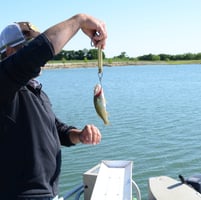 Even if there is ample structure and additional resources provided, your supply of Bluegill will never be sustainable if there is an excess of predator species. Keeping predator numbers in check is the only way to ensure growth and recruitment in your Bluegill population. An excess of predators will all but eradicate your smaller size classes of Bluegill. When this happens, your Bass will have to expend more energy to search for smaller meals, which begins to burn the candle at both ends when it comes to their growth rates. A yearly predator harvest will help to ensure that your Bluegill are being recruited to larger size classes to provide the maximum benefit to your predators, as well as replacing those broodfish that are lost yearly to natural causes. If you've been lax on this management tactic, then a quick fix might be in the seasonal stocking of additional forage species, such as Tilapia, Rainbow Trout, or Golden Shiners.
Even if there is ample structure and additional resources provided, your supply of Bluegill will never be sustainable if there is an excess of predator species. Keeping predator numbers in check is the only way to ensure growth and recruitment in your Bluegill population. An excess of predators will all but eradicate your smaller size classes of Bluegill. When this happens, your Bass will have to expend more energy to search for smaller meals, which begins to burn the candle at both ends when it comes to their growth rates. A yearly predator harvest will help to ensure that your Bluegill are being recruited to larger size classes to provide the maximum benefit to your predators, as well as replacing those broodfish that are lost yearly to natural causes. If you've been lax on this management tactic, then a quick fix might be in the seasonal stocking of additional forage species, such as Tilapia, Rainbow Trout, or Golden Shiners.
Thriving Bluegill in 3 Easy Steps
In summary, to keep a steady supply of Bluegill thriving in your pond, focus on these three management tactics:
- Place complex structures in shallow water areas near spawning flats,
- Provide additional resources to help increase the growth/ reproduction rates and carrying capacity of Bluegill by either fertilizing in the spring or installing an automated feeder to dispense a floating pelleted feed,
- Implement an annual predator harvest, limiting the excessive predation that would ruin the Bluegill population, to help keep a healthy age structure to your Bluegill population.
If you are noticing your Bluegill population struggling, then the seasonal stocking of alternate forage species will help by reducing predation pressure, allowing your Bluegill population the rebound and restructure their age distribution.
If you have any other questions, feel free to contact us anytime. We're happy to advise!
See y'all down at the pond.


